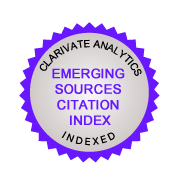Abstract
In this paper we elaborate on the neo-Confucian interpretation of the Yi-Jing system. Based on a further exploration of the Diagram of the Supreme Polarity of Zhou Dunyi, we develop a cosmological-anthropological model in constructive engagement with Western thoughts and views on systems and on the universe. The vital energy (qi) and the pattern (li) play central roles in this model and also in the interpretation of the images and forces of the trigrams. This leads to a comparative model, based on a quadrant system with four perspectives: naturality, rationality, humanity and morality. This model fits in the quadrant system of Wilber, and also corresponds to the cosmic ring of duograms. The natural YI Ba-Gua, a cycle of trigrams where Heaven and Earth are seen as elements of the production cycle, supplies an alternative interpretation of the King Wen Ba-Gua. When extending the quadrant system to octants we observe a cycle of trigrams, the cosmic YI Ba-Gua, as a spiralling sequence, following the order of the Five elements. Heaven and Earth are seen, as in the elaborated Diagram of the Supreme Polarity, as instigator and receiver respectively of the production cycle. It forms the framework for an alternative interpretation of the Fu Xi Ba-Gua. In addition to the images, we can display the forces of the trigrams in the octant system of the cosmic YI Ba-Gua as concentric circles. In the YI Ba-Gua we combine both the cosmic and the natural YI Ba-Gua, and compare this with the Ba-Gua of King Wen and of Fu Xi. Finally we present some hypotheses for further analysis of the matrix of hexagrams based on the cosmic YI Ba-Gua. The comparison of the different philosophical views in one framework may lead to further engagement of these ways of seeing. We already conclude that there is so much structure in the Yi-Jing that it is possible to use the wisdom of the Yi-Jing without applying a divination system.
Recommended Citation
DONKERS, Harry
(2019)
DOI: https://doi.org/10.31979/2151-6014(2019).100204
"YI-JING INTEGRAL (YI): A NEW NATURAL AND COSMIC BA-GUA,"
Comparative Philosophy: Vol. 10:
Iss.
2, Article 4.
Available at:
https://scholarworks.sjsu.edu/comparativephilosophy/vol10/iss2/4
Included in
Comparative Philosophy Commons, History of Philosophy Commons, Metaphysics Commons, Other Philosophy Commons


